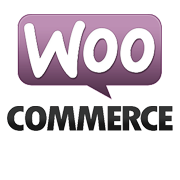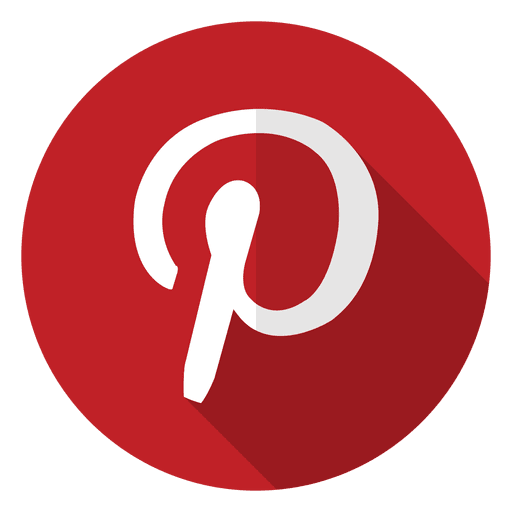How I Started A $33K/Month Bee-Inspired Goods Business
Hello! Who are you and what business did you start?
I am Kara Brook Brown. I am a serial entrepreneur. Waxing Kara is my fourth business and the first business that has involved the manufacturing and distribution of products. My previous companies were service-based in graphic design, technology innovation, and digital space. I am also a painter with a particular interest in encaustic painting, which requires beeswax.
Today, Waxing Kara creates delicious natural Bee Inspired® food products and skin-loving bath and beauty goods that include ingredients that exist thanks to the honeybee. Our flagship products are artisanal raw honey and honey-based home spa products.
I started working on and in this business in a very part-time manner until 2015, when I made a full-time commitment. Today we are at $33K per month with three full-time staff, including me. Plus two part-timers.

What's your backstory and how did you come up with the idea?
Waxing Kara grew organically from my work as an artist. I paint with encaustic, a paint made with beeswax, and in 2010, I started beekeeping on Maryland’s Eastern Shore to harvest wax for my encaustic paintings.
I became captivated by honey production and the plight of honey bees in this country. I learned about the importance of bees to the sustainability of our food supply, and the preciousness of honey, especially its nurturing and healing properties. Before launching Waxing Kara, I became a honey bee advocate and began raising bees on a small scale and have increased each year until 2020 when I will manage 18 hives on our 102-acre farm on the Eastern Shore of Maryland. For the bees, I began planting food sources such as sunflower, bergamot, and lavender. The goal was to cultivate a complex, organic environment that provides bees essential nutrients through nature. We have planted at least 40 acres of wildflowers, fruit trees, and berry bushes, an incredible habitat all for bees (and other winged creatures) with consistent blooms from May through October.
There isn’t one single life experience or educational achievement that has put me where I am today. Instead, it’s been a series of inspirations along the way. There was no master plan. In hindsight, everything that happened has flowed like honey to lead me down this path.
On my journey, at this time of my life, I wanted to be part of a movement of change. I didn’t start with a plan that mapped out point A or point B or know how to get where I was going right out of the gate. This has all been an organic and beautiful, though sometimes mystifying process. It took quite a few years to iron out the details.
If you are serious about being a maker of bath+body goods, get educated now so that you are not overwhelmed later. Don't think that none of the rules apply to you. They do.
When I decided I was going to create this honey brand, I connected with a leading indie brand designer with a creative brief in hand. I knew that the depth of the package would make or break the brand. I wrote all about my process here.
I launched with a jar of honey, one small honey favor, one bar of soap, and a bag of three honey lollipops supported by a robust and flexible, sustainable graphic identity system. Shortly after launch, in my travels, I found products and makers that I worked with to realize a line of products that are with natural goodness. Each product at launch contained honey from the farm and or dried lavender from the farm. I would send these items to the makers to incorporate them into our products.
Take us through the process of designing, prototyping, and manufacturing your first product.
I created a master list of ingredients produced by or resulting from the work of honey bees. I knew that I wanted a simple, elegant, and beautiful line of products. In the beginning, since I was working with other seasoned makers, the prototyping process was theirs. Since I chose products that they already manufactured and tweaked some of the ingredients to be from the farm, the process did not rely on what I knew (or didn’t know).
Over time, when I began to understand that wholesale was the way to get the word out about my mission (the bees), it became clear that I would need to become a manufacturer.
To prepare, I went to school on many levels. I studied wholesale strategy and developed one. I studied Good Manufacturing Processes (GMP). As my relationships with formulators moved forward, with the help of administrative assistants, each formulation was turned into a business process and added to our system.
If you are going into a maker business, you will know if it is well-received within a year. When you move into your first space, make sure it's big enough or at least expandable.
We converted all formulations into grams, and we inventory all of our raw materials in grams when they arrive. GMP dictates our processes today, and we have cloud-based systems where we track our batches. It’s incredibly tedious and a lot of work, but as long as we put the data into the system, the system manages our products and processes. Next, I started connecting with chemists and formulators to develop products for us. One product has been on the bench for two years, and we still haven’t begun manufacturing it.
Next, we began the process of registering our trademarks. There were several. It was a necessary part of the business.
Describe the process of launching the business.
There were a few steps to “launching”.
I started this business from home. Logistics prevented me from getting large deliveries and I didn’t have enough space for storage.
Next, I moved to an industrial area.
At the time, I could not predict that retail business would grow in the way that it did. In my mind, I was pursuing an eCommerce business. An industrial area was not very smart. Parking and other conditions prevented us from opening our doors to the community.
It was my third move to our current location that warranted an official launch. Our retail business makes up about a third of our revenue.
All of this transpired over a three year period of time.
Working from home, I never knew who was going to stop by to help me with labeling our products. Here my friend Rebecca Hoffberger, founder of the Visionary Art Museum who stopped by to check in with me and help (that’s a true friend):

Moving from home:

Our first commercial space:

Our space today, during and event:

I financed this business with my money. In my last company, I started in my home, not dissimilar from the way that this business started. Over time, I saved money and acquired commercial real estate. When it was time to retire from that business, I became a commercial landlord. Until 2016, the rental income was what financed this business.
I have always been cautious with money in this business. I delayed hiring full-time staff until 2015. Most help along the way was extremely part-time, friends and family. If I worked with consultants, I made sure that the terms were clearly stated before commencing projects. Formulators were held to that standard as well. While I am genuinely unable to outline my costs here and now I can tell you that I spent as little as I possibly could for as long as I could, and did as much of the work that I could on my own.
After I committed to developing a logo, and system for the packaging project, I launched with a very rudimentary, very cookie-cutter, basic, lo-tech web site. I spent most of my time (and budget) developing the visual brand, and very little time on the site. I hired a local woman to design it, the cart wasn’t particularly feature-rich, and we used PayPal for credit card processing. Though I had experience with designing and building web sites, e-commerce was not part of my vernacular. Unfortunately, I didn’t know about Shopify.
Since launch, what has worked to attract and retain customers?
I started blogging in 2010, the very first moments that I began Waxing Kara as an artist painting with encaustic, and then documenting my time with the bees on YouTube. The blog was informational, and there was no store. The first iterations were not overly optimized for SEO. My cousin Bobby edited my writing. I am very grateful to him for helping me find my voice. In hindsight, this was the right decision. I was building a strong foundation for the business, though this was not my goal. I just wanted to share. The art and the bees were fascinating to me, and I guessed others might enjoy what I was doing.
In March of 2013, Cooking Light Magazine asked to include our honey lollipop in a honey roundup feature in their May issue. I sold 1,000 lollipops the month that the roundup published. That’s when I realized that this is the way a small indie business grows.
I bought “Recipe for Press” a book by Amy Flurry to learn how to do media outreach. Then I took a class with her in Atlanta to further refine my pitch. She is amazing. I highly recommend the book and working with Amy.
In late-Summer 2013 someone stole my bees. It was this crazy story. The hives were coming along and doing well, they were full of honey, and a ton of bees, and on a routine inspection, I noticed that one of the supers (a drawer of honey) was gone. I wrote about it on the blog, and the next thing I knew, the local news channels were calling to interview me. It was not the goal. I could not believe how much attention the story brought.
As time passed with one-two posts a week, I accumulated a ton of content. I was very fortunate to meet a perfect intern who worked for us for three years, and in addition to focusing on social, Stephen picked up the ball on the blog and continued the tradition. Each year, I revisit blogs and improve on them, adding content, fine-tuning keyword strategy, and sharing on Facebook, Instagram, Twitter, and Pinterest. So that is the foundation.
We work hard to cultivate and keep our customer list current. We communicate weekly with our customers by email and quarterly by postal mail.
Once per year, we print a catalog and mail it in late September, this is by far our most significant and most expensive outreach effort to consumers.
We have created wholesale catalogs in the digital realm for years. Last year when we attempted to bring on a sales rep group, we created an elaborate sales kit, including a 64-page wholesale catalog. It was beautiful, but the cost was in excess of the sales that followed, so we have returned to a digital document.
We post to Instagram and Facebook, Twitter and Pinterest to keep in touch with our customers, but we’ve found Email and Snail-mail with specific calls to action have been our best methods of keeping in touch with, attracting and retaining customers to date.
How are you doing today and what does the future look like?
Setting up this manufacturing business took an incredible amount of energy. Besides learning and getting trained in GMP, every single product required procedures, batch records, documentation, and then we automated. It took 14 months and 2 significant failed efforts at getting this right. It ate resources, and the consultant that helped us was at a considerable expense.
It was only in 2019 that we first made a profit — the result of focus. We have identified a few important attributes to our repeat customers. With the help of an excellent business consultant, who has helped businesses similar to mine, I am honing in on a wholesale marketplace where we have achieved the most success. We are currently surveying some of our best customers and will take the findings straight into our product lines. We have work to do, and we are doing it.
The future looks bright.

Through starting the business, have you learned anything particularly helpful or advantageous?
Inventory management is a big huge bear. I took the task too lightly in the beginning stages of the business. If you are serious about being a maker of bath+body goods, there's legislation that's been cooking in congress for a while now, and you don't want to get caught being ill-prepared with your business processes when it passes. Get educated now so that you are not overwhelmed later. Don't think that none of the rules apply to you. They do.
Learn about every aspect of your business and really study what you don’t know. It’s not all fun and games. It’s business. Even if you’re selling lollipops, it’s serious business. People have lollipop emergencies.
Start selling your products at events in your community, MayDay, Food Festivals, Farmers Markets, etc. and listen to everything that everyone has to say. Get to know your regulars and be proactive in remembering names. Be sure to collect names and email addresses. They will be critical to your continued success when you get over attending these things one day. Keep in touch with email and snail-mail.
Get into the habit of taking and sharing a lot of photos. Be sure to keep the message positive and study up on photography. It's essential to shoot as many images as possible on your own. It's costly to work with professional photographers. Limit that expense to once a year, and be sure to create shot lists and get really organized for shoot days by creating “sketches” with your iPhone.
Starting with a blog was a great idea. Do that. Use Wordpress, but I can’t recommend WooCommerce as a shopping cart. My understanding is that Shopify is better. WooCommerce was a mistake for us. It's an expensive constant work in progress.
If you are going into a maker business, you will know if it is well-received within a year. When you move into your first space, make sure it's big enough or at least expandable. For me, that meant at least 2500 feet. We are taking up close to 4000 feet today between two spaces on the same street. You need room to store all the components. It would help if you had a place to build palettes.
What platform/tools do you use for your business?
- Email Capture: Privy
- Email marketing: MailChimp
- Affiliate Network: ShareASale
- Shipping: ShipStation
- CRM: HubSpot
- SEO Tracking: Ahrefs and Ubersuggest
- Social: Tailwind and Planoly
- Blog: WordPress
- Ecommerce: WooCommerce
What have been the most influential books, podcasts, or other resources?
Today I follow and listen to other beekeepers and bee-related organizations and other artists and formulators. I invest in learning about processes specific to what I am doing here, rather than reading books on business.
The original books that I read long ago, that are now probably outdated were the best books for me. I loved Michael Gerber’s The E-myth and enjoyed hearing him speak at a private event. All the scorecard books (by Harvard Press) were also helpful to me in my early business days.
Advice for other entrepreneurs who want to get started or are just starting out?
If you are going into a maker business I suggest that you sit down with small, medium and large format manufacturers and interview them. Take tours of their facilities. Get to know the business in various stages.
I never realized how much space I would need in those early days working in my studio and picking and packing from underneath a billiard table. At a minimum for a micro-manufacturer, you need 2500-3000 square feet. In Maryland, that space is at a hefty sum. If your business grows, you will need more space. You will need your own office, even if you think you don’t as you grow and shift having a quiet place to make phone calls becomes important to your day-to-day.
Start the right way. Learn about every aspect of your business and really study what you don’t know. It’s not all fun and games. It’s business. Even if you’re selling lollipops, it’s serious business. People have lollipop emergencies.
Are you looking to hire for certain positions right now?
We are always looking for people who are motivated by our mission and are happy to entertain talent at every level.
Where can we go to learn more?
If you have any questions or comments, drop a comment below!
In the United States, bee populations have dramatically fallen. Bees face daily struggles that many are not aware of. A combination of starvation, parasites, pesticide exposure, and climate change actively disrupt apiaries across the world. Until we find success combating these threats, it is up to each and every one of us to help support the bees so that they have a chance to thrive.
You don’t need to own a farm or even be a beekeeper to do this. Set aside a small bit of your land to plant as a pollinator garden. Buy produce from local organic markets, and support your beekeepers by buying their honey. The little things all add up, and together, we can make a beautiful, bee-friendly world.

Download the report and join our email newsletter packed with business ideas and money-making opportunities, backed by real-life case studies.

Download the report and join our email newsletter packed with business ideas and money-making opportunities, backed by real-life case studies.

Download the report and join our email newsletter packed with business ideas and money-making opportunities, backed by real-life case studies.

Download the report and join our email newsletter packed with business ideas and money-making opportunities, backed by real-life case studies.

Download the report and join our email newsletter packed with business ideas and money-making opportunities, backed by real-life case studies.

Download the report and join our email newsletter packed with business ideas and money-making opportunities, backed by real-life case studies.

Download the report and join our email newsletter packed with business ideas and money-making opportunities, backed by real-life case studies.

Download the report and join our email newsletter packed with business ideas and money-making opportunities, backed by real-life case studies.




















